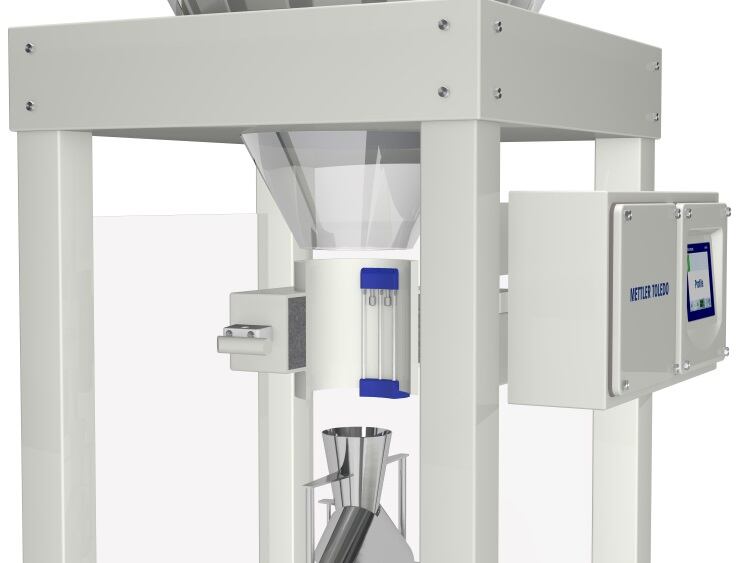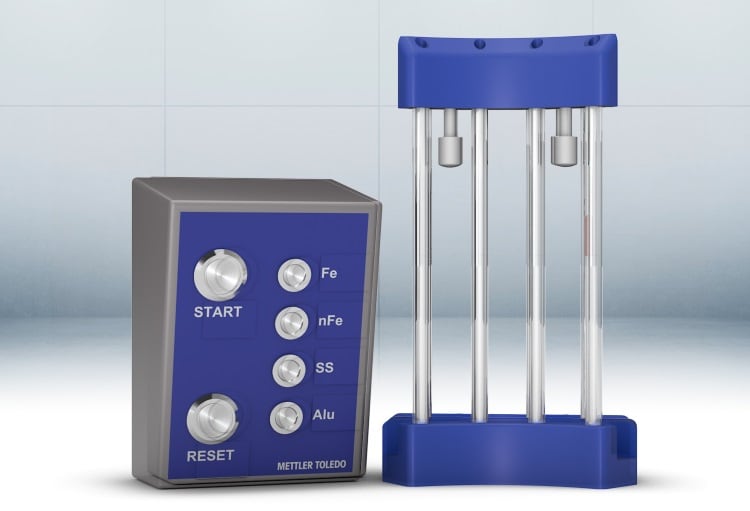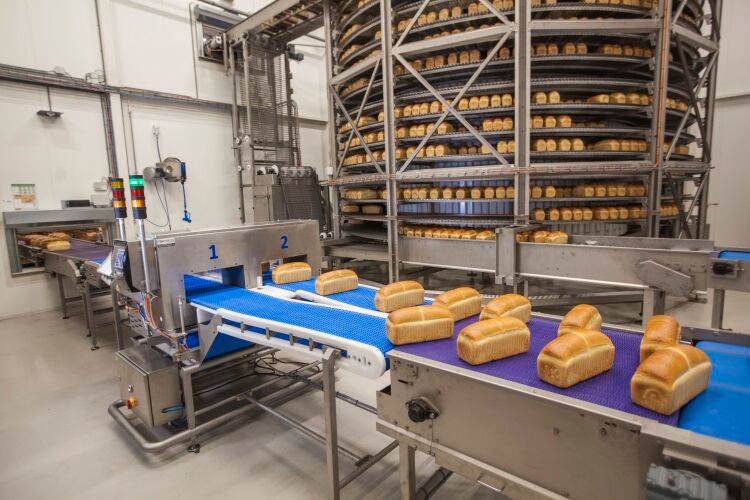Traditional methods of testing gravity fed metal detectors and those installed on Vertical Form Fill and Sealing (VFFS) packing lines typically involve frequent and time-consuming stoppages and potential risks to operator safety.
Topping that, they also often generate inconsistent results and do not confirm that the operational specification of the metal detector is being achieved.
According to Mike Bradley, global head of Sales (Metal Detection) for Mettler-Toledo Product Inspection, the ‘Drop-Through’, ‘Fishing Line’ and ‘Test Rod’ methods are all routine performance monitoring test processes for vertical metal detection inspection systems.
“Manual testing often requires teams of operators to put their safety at risk by climbing ladders and reaching over machinery so that they can drop or insert test samples into a throat or gravity-fall metal detector,” said Bradley.
“These test processes are unable to accurately verify the operational specification of the metal detector. This is because they do not confirm centerline testing – the least sensitive part of the metal detector – as the placement of test samples passing through is generally random.
“In addition, manual testing processes can carry cross-contamination risks and can potentially compromise food product quality, as the test samples come into direct contact with the product.”
ATS
Fortunately, the Automatic Test System (ATS) from Mettler-Toledo is a relatively new form of testing a vertical metal detection that provides solutions to these issues.
Said Bradley, “ATS is suitable for use in vertical food inspection applications such as snacks, crisps, confectionery, infant formula, bulk flour and nutraceutical powders, plus granulates such as sugar and food additives.”
He said the system works by transporting test samples by pneumatic control, up discreet non-metallic tubes inside the metal detector’s aperture to a defined position within the sensing coils.
The test samples are then released, simulating the presence of a contaminant in free-fall under gravity.
A software algorithm correlates centerline sensitivity with edge of aperture sensitivity, eliminating the random nature of vertical metal detector testing.

RT Mode
Reduced Test (RT) Mode is an additional feature available on some throat and gravity-fall metal detection systems.
“When RT Mode is active, the metal detector monitors its online sensitivity performance and provides an alarm should the sensitivity drop below the specified level allowing companies to reduce the frequency of testing by up to 80%, without increasing their risk. This directly, and in some cases dramatically, improves productivity as production is now stopped less frequently for testing allowing productivity gains to be realised.”
Case study
Italian savoury snack producer PATA SpA has 30 throat-style metal detectors on its production line, of which 16 have ATS installed.
“ATS and RT Mode have provided several benefits for PATA,” said Bradley.
These include:
Compliance:
Mettler-Toledo claims ATS is the only method of testing that confirms centerline (worst-case) sensitivity performance, delivering test results that can be trusted.
When connected to a centralised data collection and management system, ATS provides electronic records that are easily stored for future reference, for audit compliance or proof of due diligence. Having electronically stored data reduces the risk of errors or loss associated with paper records. This also supports rigorous quality control regimes, production optimisation and simplified production line operation.
Productivity:
The company said ATS tests clock in faster than traditional testing methods.
An end-to-end 3-metal test (ferrous, non-ferrous and stainless steel) can be completed by a single operator in under 40 seconds, compared to an average 3-4 minutes and two operators using traditional, manual methods.
RT Mode also reduces testing frequency, from every two hours to every 12 hours. This means that a typical snack producer with 24 weigher-bagger lines running at an average of 100 bags per minute could save more than 4,000 man-hours and produce 25 million more packs per year.
Online calculators are available for food manufacturers to work out their return on investment from installing ATS and RT Mode.
Operator safety:
Mettler-Toledo claims that not only will operators be safer with ATS, but fewer of them will be needed to conduct testing.
For example, instead of one operator having to climb high to drop a sample through the aperture and one to record the result and remove the sample from the production line, ATS testing can be completed by a single operator. It virtually eliminates the need to work at height to conduct routine testing and removes the need for operators to reach across installed equipment to insert a test sample.
Quality and safety:
It maintains ATS is a non-invasive method of testing, so test samples do not come into contact with food, removing the danger of cross-contamination.
The higher sensitivity levels of RT Mode mean that smaller, irregular-shaped metal contaminants can be detected. It also continuously checks the performance of the metal detector to ensure it is always working to a level as good as, or better than, the manufacturer’s specifications.
Remote control:
An 'Emulation' feature is available, which allows operators to remotely control the metal detectors by mirroring their interfaces on remote networked devices. This is ideal for testing systems installed in inaccessible locations and enhances operator safety.
Mettler-Toledo offers the ATS and RT Mode on its Profile Throat metal detectors and Profile Gravity Fall metal detection systems.





